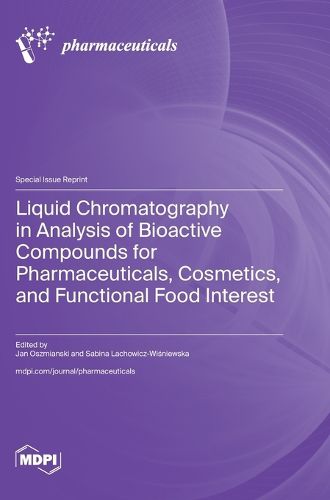Readings Newsletter
Become a Readings Member to make your shopping experience even easier.
Sign in or sign up for free!
You’re not far away from qualifying for FREE standard shipping within Australia
You’ve qualified for FREE standard shipping within Australia
The cart is loading…






This title is printed to order. This book may have been self-published. If so, we cannot guarantee the quality of the content. In the main most books will have gone through the editing process however some may not. We therefore suggest that you be aware of this before ordering this book. If in doubt check either the author or publisher’s details as we are unable to accept any returns unless they are faulty. Please contact us if you have any questions.
Plants produce a wide range of phytochemicals, known as non-nutrition compounds, to confirm their identity, and they are used for the production of natural pharmaceuticals, cosmetics, and functional food, among other things, due to their pro-health properties. The use of modern chromatographic techniques allows for accurate quantitative and qualitative identification of the above-mentioned phytochemicals and their natural products. Liquid chromatography is one of the most efficient and robust specific techniques due to the merits of convenience and strong separation ability, as well as a wide range of material applications for identification. Liquid chromatography is widely used to analyze plants, nutraceuticals, pharmaceuticals, and cosmetics and in natural product quality control or quantitative determination of bioactive compounds. The most commonly used for identifying different plant materials and pharmaceuticals are ultra- and high-performance liquid chromatography with UV-VIS, fluorescence, and diode array, which is equipped with mass spectrometry or tandem mass spectrometry detection methods. Therefore, for this Special Issue, we published studies concerning the latest scientific news, insights, and advances in the field of innovation of liquid chromatography for the analysis of bioactive compounds for pharmaceuticals, cosmetics, and functional food interests.
$9.00 standard shipping within Australia
FREE standard shipping within Australia for orders over $100.00
Express & International shipping calculated at checkout
This title is printed to order. This book may have been self-published. If so, we cannot guarantee the quality of the content. In the main most books will have gone through the editing process however some may not. We therefore suggest that you be aware of this before ordering this book. If in doubt check either the author or publisher’s details as we are unable to accept any returns unless they are faulty. Please contact us if you have any questions.
Plants produce a wide range of phytochemicals, known as non-nutrition compounds, to confirm their identity, and they are used for the production of natural pharmaceuticals, cosmetics, and functional food, among other things, due to their pro-health properties. The use of modern chromatographic techniques allows for accurate quantitative and qualitative identification of the above-mentioned phytochemicals and their natural products. Liquid chromatography is one of the most efficient and robust specific techniques due to the merits of convenience and strong separation ability, as well as a wide range of material applications for identification. Liquid chromatography is widely used to analyze plants, nutraceuticals, pharmaceuticals, and cosmetics and in natural product quality control or quantitative determination of bioactive compounds. The most commonly used for identifying different plant materials and pharmaceuticals are ultra- and high-performance liquid chromatography with UV-VIS, fluorescence, and diode array, which is equipped with mass spectrometry or tandem mass spectrometry detection methods. Therefore, for this Special Issue, we published studies concerning the latest scientific news, insights, and advances in the field of innovation of liquid chromatography for the analysis of bioactive compounds for pharmaceuticals, cosmetics, and functional food interests.